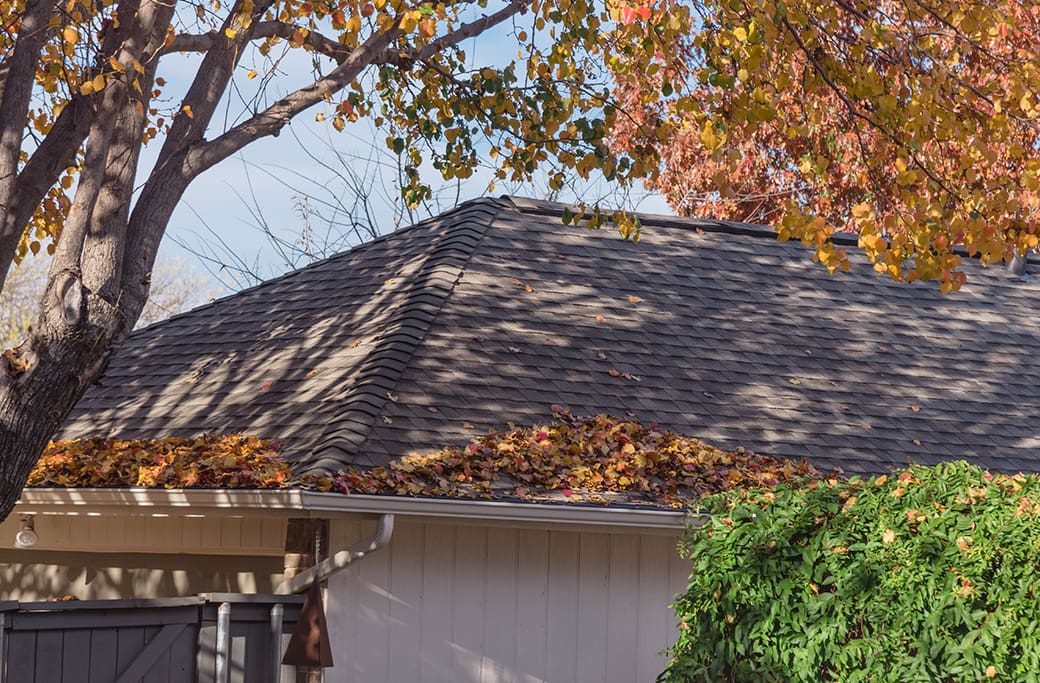
Autumn is a season of transformation, where trees shed their leaves, painting landscapes in hues of gold and crimson. However, while these fallen leaves are picturesque, they can become problematic if left unmanaged. Here at STOP Restoration, we understand the importance of fall maintenance in safeguarding your home from potential disasters. Ignoring those vibrant piles can lead to clogged gutters, water damage, and mold growth—issues no homeowner wants to face. Whether you’re a homeowner, a DIY enthusiast, or a property manager, these insights will help you maintain a safe and dry home throughout the fall season.
Hidden Danger of Fallen Leaves
Fallen leaves might seem harmless scattered across your yard, but they pose hidden dangers when they accumulate. They gather in gutters, drains, and around your home’s foundation, creating blockages that prevent water from flowing away properly. This can lead to standing water, which may find its way into your roof, walls, or even basement, causing significant water damage.
When leaves clog your gutters, rainwater has nowhere to go and starts seeping into places it shouldn’t. This infiltration not only damages your property but can also weaken its structural integrity over time. Additionally, wet leaves stuck in gutters or piled around the foundation create a moist environment that becomes a breeding ground for mold, further threatening your home’s health.
Mold thrives in damp conditions, and once it takes hold, it can be difficult to remove. The spores spread quickly, potentially affecting air quality and posing health risks. That’s why addressing leaf buildup before it escalates is critical in preventing mold growth and maintaining a healthy living space.
Avoiding Water Damage from Clogged Gutters
Regular gutter cleaning during the fall is an essential task to avoid water damage. By keeping your gutters clear, you ensure that rainwater can flow freely, preventing overflow that can damage your home. Begin by removing debris with a gloved hand or a small scoop, paying attention to each section of the gutter. Once cleared, flush the gutters and downspouts with a hose to check for any clogs or obstructions.
Next, inspect the entire gutter system for signs of wear or damage, such as loose brackets or sections pulling away from the roof. Repairing these issues promptly ensures that your gutters function efficiently throughout the rainy season. To further minimize future buildup, consider installing gutter guards. These protective covers prevent large debris from entering the gutters, reducing maintenance efforts and the risk of clogs.
Gutter guards come in various styles and materials, offering something to fit every budget and need. Investing in a quality guard system can save time and prevent headaches down the road, making it a wise addition to your fall maintenance checklist.
Preventing Mold Growth in High-Risk Areas
To prevent mold growth, it’s essential to keep damp leaves away from your home’s foundation and drainage systems. Regularly rake and remove leaves around the exterior walls, ensuring they don’t pile against the structure. This helps maintain proper drainage and reduces moisture levels that can lead to mold infestations.
Inside your home, focus on proper ventilation and humidity control, especially in high-risk areas like basements. Use dehumidifiers to keep air moisture levels in check and run exhaust fans in bathrooms and kitchens to expel damp air. By creating a dry and well-ventilated environment, you significantly reduce the chance of mold developing.
In addition, conduct regular inspections of your home, looking for any signs of damp spots or musty odors that might indicate mold presence. Early detection allows for swift action, minimizing potential damage and health risks associated with mold exposure.
How to Properly Dispose of Fall Leaves
Once you’ve gathered your leaves, disposing of them responsibly is the next step. Consider eco-friendly options like composting, which turns leaves into nutrient-rich soil, perfect for gardens. If composting isn’t feasible, use leaves as mulch to insulate plants and improve soil quality during the colder months.
Prompt leaf removal not only keeps your property tidy but reduces the risk of mold growth on damp, decomposing foliage. Leaving leaves to decay naturally may seem harmless, but it can lead to soggy, mold-prone patches that affect both your yard and home’s foundation.
Consider local regulations and pickup schedules for leaf disposal. Many communities offer yard waste collection services, helping you rid your property of leaves efficiently. Participating in these programs ensures your fall cleanup efforts contribute positively to the environment.
When to Call a Professional
Sometimes, gutters and mold issues escalate beyond simple DIY solutions, necessitating expert intervention. Recognize signs of water damage, such as peeling paint, warped wood, or persistent leaks, as indicators that professional help is needed. Mold growth that covers large areas or reappears after cleaning should also prompt a call to experts.
At STOP Restoration, we specialize in water damage and mold restoration, offering comprehensive services to address these issues effectively. Our team assesses and mitigates damage, using advanced techniques to restore your home to its best condition.
Don’t wait for minor problems to become costly repairs. By enlisting professionals, you ensure thorough and lasting solutions, saving time and providing peace of mind. Our crew is available for fall inspections, helping detect potential hazards before they escalate.
Prevent Fall Water Damage
Proactive fall maintenance protects your home from the pitfalls of water damage and mold growth, preserving its beauty and integrity. Ensuring your gutters are clear and leaves are managed prevents costly repairs and fosters a healthy environment.
Take these steps to safeguard your property and consider consulting STOP Restoration for inspections or immediate restoration needs. Our expertise ensures your home remains a safe and welcoming haven throughout the seasons.




